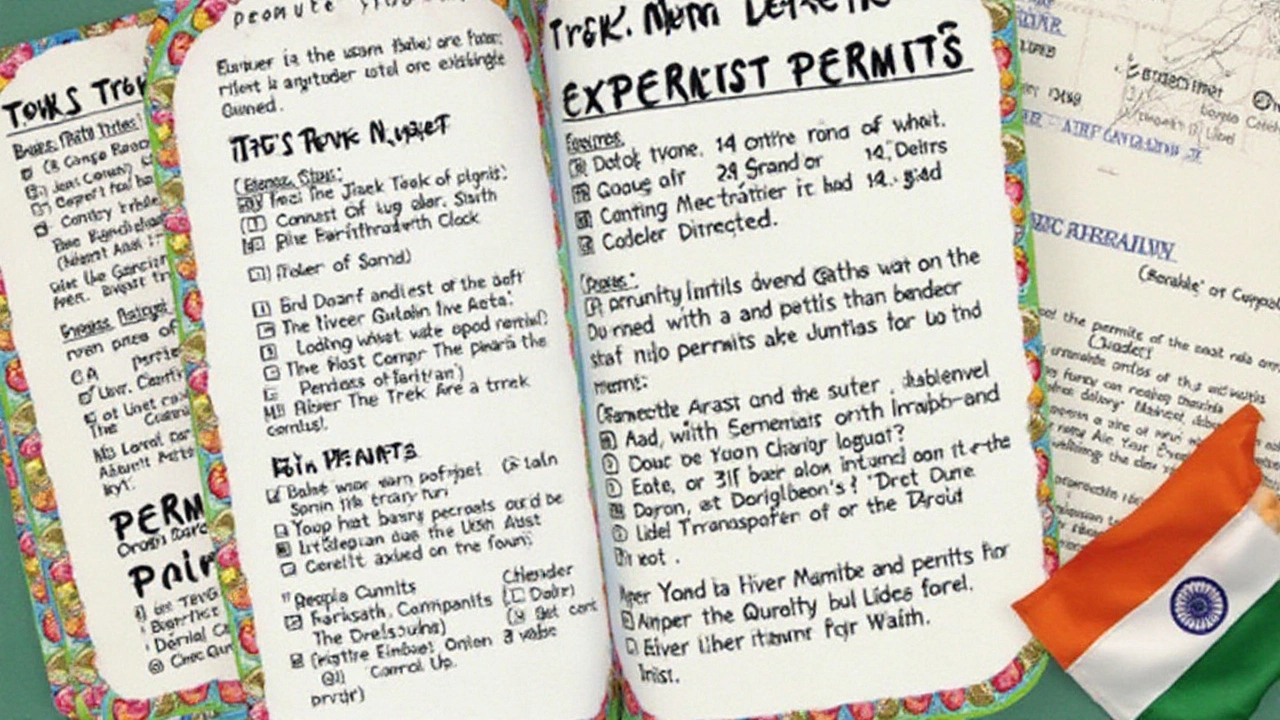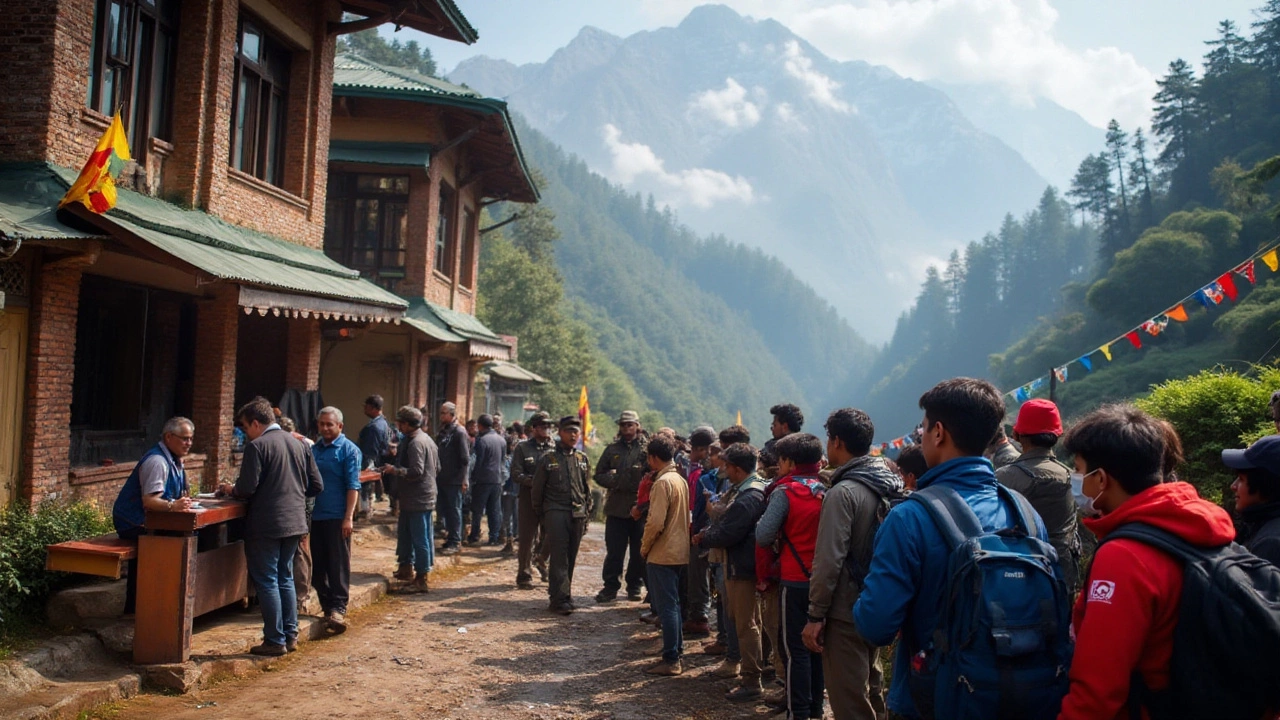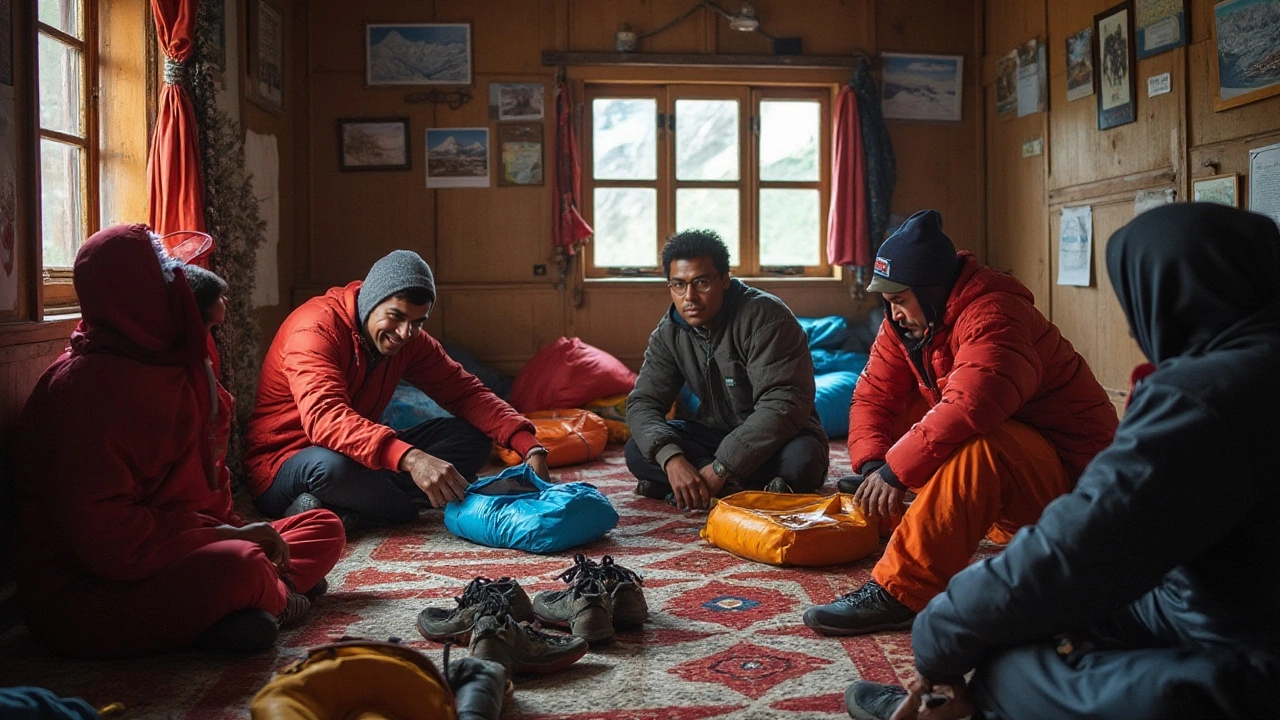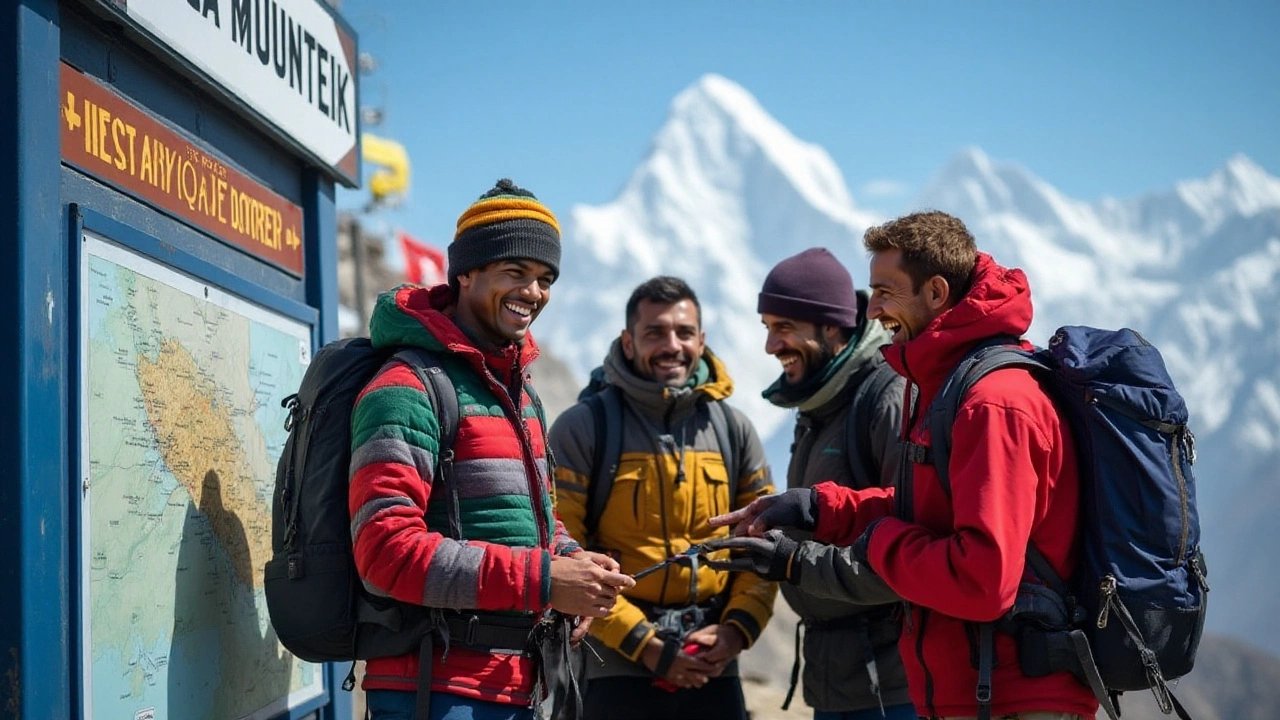Mount Everest, with its breathtaking peaks and challenging trails, stands as an ultimate destination for trekkers worldwide, including those from India. As the highest point on earth, it offers not just a test of endurance but also a journey through some of the world’s most awe-inspiring landscapes.
For Indian adventurers eager to step onto the paths leading to Everest, understanding the travel and permit requirements is crucial. While a visa is not needed when entering Nepal, there are specific permits you’ll need to secure for your trekking adventure.
In this guide, we will walk through the essential entry requirements, permits, and handy trekking tips to help you prepare for your unforgettable journey to the mighty Everest. Whether you're a seasoned trekker or a first-time adventurer, knowing what to expect can make your trip both safe and exhilarating.
- Visa and Permits for Indians to Enter Nepal
- Essential Permits for Mount Everest Trek
- Practical Tips for Indian Trekkers
- Preparing for the Everest Trek Challenge
Visa and Permits for Indians to Enter Nepal
Traveling from India to Nepal is relatively straightforward, and this simplicity is part of the allure for Indian adventurers aiming to tackle the majestic Mount Everest. Indian citizens can enter Nepal without a visa thanks to the unique relationship between the two countries, which allows for free movement across borders. You don’t even need a passport; a government-issued ID, like an Aadhaar card or Voter ID, suffices to gain entry. However, it’s always wise to carry your passport if you have one, as it simplifies identification processes, particularly when obtaining trekking permits.
Once you're in Nepal, aspiring trekkers to the Everest region need several permits. The most basic is the Trekkers’ Information Management System (TIMS) card. This card is designed to keep track of trekkers for safety purposes, ensuring that you’re accounted for in case of emergencies. The TIMS card can be acquired either in Kathmandu or in the town of Lukla, which is the starting point for the Mount Everest trek. You must also secure the Sagarmatha National Park Entry Permit, which grants access to the protected areas surrounding Mount Everest. This can be obtained in Monjo village, near the entrance of the national park, or in Kathmandu.
Another important consideration is the Khumbu Pasang Lhamu Rural Municipality Permit, introduced as a local effort to support infrastructure and conserve the Khumbu region. This permit replaces the earlier practice of obtaining local entry permits and can be purchased on the route after landing in Lukla. These permits are not just bureaucratic necessities; they contribute to maintaining the trails and ensuring ecological sustainability of these stunning landscapes.
"Climbing Everest isn’t just about the summit. It's about the journey along the way. Ensure you have all permits to respect the land and the community," advises Ankit Pandey, an experienced trekker from Trekking the Himalayas.
It’s advisable to arrange these permits before you start your trek. Doing so saves time, and in this age of digital connectivity, many agencies offer online assistance in securing necessary documentation to avoid last-minute hassles. Robust planning ensures that trekkers can focus on what truly matters – the experience and the memories they are about to create. Keep in mind to budget for these permits as they are essential components of the trekking cost, often overlooked by new adventurers in their excitement to face the awe-inspiring Everest.

Essential Permits for Mount Everest Trek
Embarking on a trekking adventure to Mount Everest is a dream shared by many Indian trekkers who have been enchanted by the majestic beauty of the Himalayas. However, this adventure isn't as simple as packing a bag and lacing up your boots. For those setting their sights on the summit or even the base camp, understanding and obtaining the required permits is crucial to ensure a smooth and legal trekking experience.
First, you need to secure the Trekkers' Information Management System (TIMS) card. Operated by the Nepal Tourism Board, this card is indispensable for trekking across various regions in Nepal, including the Everest region. The TIMS card serves a dual purpose: it helps maintain records of trekkers for safety purposes and contributes to the construction and maintenance of trekking trails. Trekkers typically need to obtain the card in Kathmandu before heading up to the mountains.
Beyond the TIMS card, trekkers eyeing the Everest region will also require a Sagarmatha National Park Entry Permit. As this park encompasses the key routes to Everest Base Camp, respecting the wildlife conservation efforts in the park is essential. Funds from this permit support local conservation projects, trail maintenance, and community development in the area. A quote from well-known conservationist Sir David Attenborough emphasizes, "Preserving our natural habitats starts with responsible tourism—we are temporary guardians."
Depending on your chosen path, an additional permit known as the Gaurishankar Conservation Area Project (GCAP) Permit might be necessary. This is mainly if your trek begins in Jiri before winding up to the more traditional routes. The integration of these conserved regions into your hiking plans deeply enriches the trekking experience while contributing to vital ecological projects.
It's worth noting that for trekkers opting for the popular Lukla route, flights from Kathmandu will need to be arranged and can often book out months in advance due to limited availability. A proper plan ensures you won't miss your window to experience the iconic Mount Everest trek. Preparing these permits and plans ahead of time makes sure your adventure is filled with awe and safely within the boundaries of legality and tradition.

Practical Tips for Indian Trekkers
Embarking on the trek to Mount Everest is an exhilarating venture, but it requires meticulous preparation and planning. For Indian trekkers, the journey is not just about physical endurance but also navigating through various logistical elements. One of the first steps is to adjust to the high altitude and variable weather conditions. Acclimatization is not just a suggestion; it's a critical part of the trek. Take your time to allow your body to get used to the thin air; this can mean spending a couple of days at key points to prevent altitude sickness, a common issue trekkers face.
"The key to a successful Everest trek lies in respecting the mountain and your own limits," says seasoned mountaineer and trekking guide Pemba Sherpa.
Before you embark on your journey, ensure that your gear is suitable for harsh conditions. The weather can be quite unpredictable. You'll need a combination of light, breathable clothing for the warmer day hikes and heavy-duty thermal gear for those cold evening descents. Another important tip is to check your equipment as well as your clothing; this includes things like your boots, which should be broken in to avoid blisters and discomfort during the trek. Strong and reliable trekking poles can take a lot of strain off your knees, especially on steep downhills.
Considering the remote nature of the trek, it's wise to travel with a well-stocked first aid kit, including medications for headaches, nausea, and other symptoms of altitude sickness. Having water purification tablets can also be a lifesaver. Though bottled water is available at tea houses along the route, purification tablets or a reliable filtration system provide peace of mind and reduce environmental impact. Remember to hydrate frequently as higher altitudes can quickly lead to dehydration, affecting your overall stamina and health.
Accompanying a local guide or joining a reputed trekking group can add an invaluable layer of safety and cultural insight to your trek. Local guides are not only familiar with the terrain but can also provide rich stories and knowledge about the area, its people, and traditions. When it comes to choosing a guide or group, look for reviews and recommendations from fellow trekkers to ensure you are in good hands. Additionally, being in a group can boost morale during tougher segments of the trek, offering support and companionship.
Apart from physical preparations, mental readiness is equally important. Approaching this demanding journey with the right mindset can make a big difference. Patience and persistence can help you handle unexpected challenges, whether it's dealing with weather delays or managing fatigue. Think of this as an opportunity to learn and grow in ways that go beyond the physical. Lastly, don't forget to immerse yourself in the beauty around you. The trails to Everest pass through breathtaking landscapes, vibrant monasteries, and friendly villages, offering plenty of chances to connect with the local culture and hospitality.

Preparing for the Everest Trek Challenge
Embarking on the trek to Mount Everest is not just about having the right permits; it's a journey that demands significant physical preparation, mental toughness, and meticulous planning. The trails to Everest Base Camp are demanding, with altitudes reaching beyond 5,364 meters (17,598 feet) at the camp itself. This makes acclimatizing your body a priority to prevent altitude sickness, a common ailment that trekkers must be prepared to face.
To start, a rigorous fitness regimen is recommended at least three to four months before your planned trek. This should include cardio exercises like running, cycling, or swimming to build up stamina. Strength training is equally essential to ensure that your legs are ready for the continuous uphill and downhill hiking that defines the Everest trails. Don't forget flexibility and core exercises to maintain balance and endurance on uneven terrains.
While physical fitness is key, mental preparation mustn't be overlooked. The journey to Everest is as much a psychological challenge as it is a physical one. Trekkers should be prepared for long hours of walking, limited comforts, and the varying weather conditions that can change from sunny to snow-swept in a matter of hours. Training your mind to stay focused and positive despite the challenges will play a significant role in successfully completing the journey.
Nutritional preparation is another crucial aspect. Packing lightweight yet nutritious food that provides energy, such as nuts, dried fruits, and protein bars, is essential. Staying hydrated is vital, and tablets or UV filters for water purification will be your companions. The tea houses along the trail offer meals, but carrying personal snacks can provide a morale boost during long stretches.
Incorporating gear preparation into your plans is imperative. A sturdy backpack, layered clothing to adjust to temperature changes, a quality sleeping bag, and reliable hiking boots are just the beginning. Don’t underestimate the importance of a good windproof and waterproof jacket and pants as weather at these altitudes is unpredictable. A well-stocked first aid kit with necessary medications like Diamox for altitude sickness, pain relievers, and antiseptics should be a part of your essential gear.
Preparation isn’t complete without a strategic itinerary that allows for acclimatization days and considering the best time to trek. The pre-monsoon months from March to May and post-monsoon months from September to November are considered ideal. These times not only promise stable weather but also bring views of brilliant skies and blossoming trails.
“The biggest adventure you can take is to live the life of your dreams,” said Oprah Winfrey, perfectly capturing the essence of challenging oneself with such monumental undertakings. Tackling the trails of the world’s tallest mountain is undoubtedly an adventure of a lifetime, but it is one that rewards the prepared with memories for a lifetime.
